This season's Home of the Year offered something for everyone – whether you wanted to do a complete overhaul of your house or just borrow some clever quick-fix tricks. The level of personalisation in the homes selected as finalists show that homeowners are no longer afraid to let their personality shine through in their interiors and exteriors. Let's take a quick look back at this season's chosen designs.
Episode 1 : Distress signals
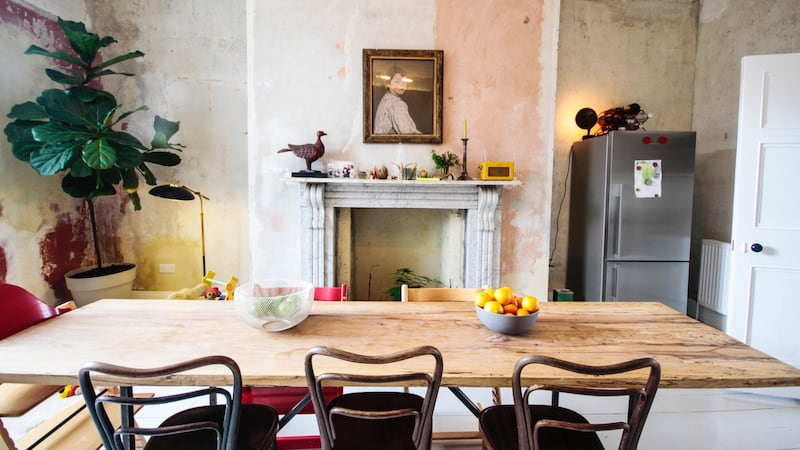
Designers Esther Gerrard and Edward Coveney of Elements of Action live in a duplex apartment within a Georgian building in Dublin 6 that they restored using the services of A2 Architects.
When they stripped back the walls to investigate what was underneath they decided to keep the historical fabric because it was telling a lot about the building, Gerrard recalls.
“Any damaged parts were lime plastered using traditional techniques and the walls were then washed and sealed.”
In the distressed walls you can still see remnants of a red paint used in one corner, and pale pink patching adds interest throughout.
“We added simple modern elements: a handleless kitchen made of marine-grade ply and featuring book-matched marble counter and splashback stained a dark old master shade to match an antique cabinet in the room, and a long trestle-style table designed and made by Edward using spalted beech from the Lisnavagh Estate in Co Carlow.”
The work of the designer and his company name Elements of Action feature throughout the apartment including marble-topped framed side-tables and a marble bathroom that features floor to ceiling-size slabs of Nordic rossa, a striated pink material that clads the walls and window and that has been polished to add a reflective element.
Elementsofaction.net; A2.ie
Episode 2: Life at the top
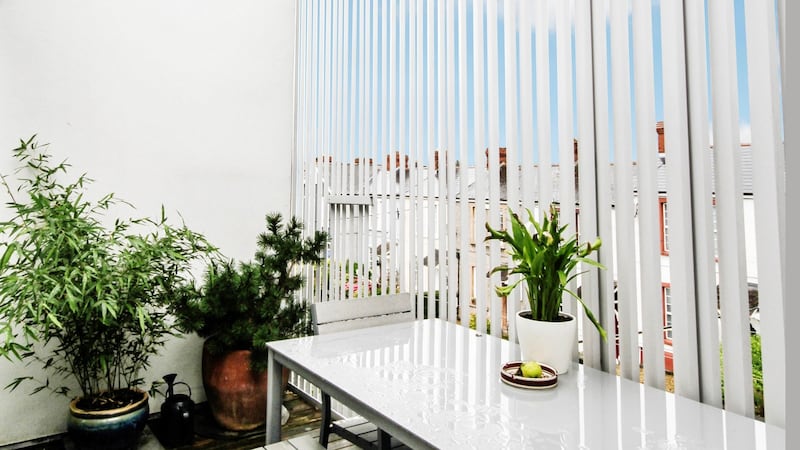
A director in a tech firm, Alec Darragh enlisted the services of Odos Architects to build him a townhouse-style home with a garage for his motorbike and cycling hobby, and living space at the top to best enjoy the light and views the Grangegorman location had to offer. The project started a decade ago and shows the one of the first examples of Odos Architects’ use of fin screens to create privacy and light and shadow play. It’s a detail that the firm has used in several of its projects, so much so that it has become a sort of signature. On the three-storey property’s top floor terrace they shield the west-facing space from prying neighbours. When you’re walking up the street you can catch glimpses of the terrace but once up there it is completely private. And because the fins are not set out in a symmetrical fashion you get afternoon sunlight beaming through.
The east-facing garden features a stone supplied by Mountcharles-based McMonagle Stone. Darragh discovered the quarry while cycling in Co Donegal. Porous, with some mica in it, the stone has quite a range of colours in it, from purples to yellows, and it has to be power-washed once a year. Landscape architect Elaine Cooke suggested a Japanese acer for the corner and a potted olive tree to add some greenery. The filter of the fish pond needs to be cleaned a couple of times a year, which Darragh says is a messy job but keeps the water clear. The pale grey dining table and chairs are from Ikea.
Odosarchitects.com; mcmonaglestone.ie; Elaine Cooke 086 1788944; ikea.com
Episode 3: Quaker style in Co Wicklow
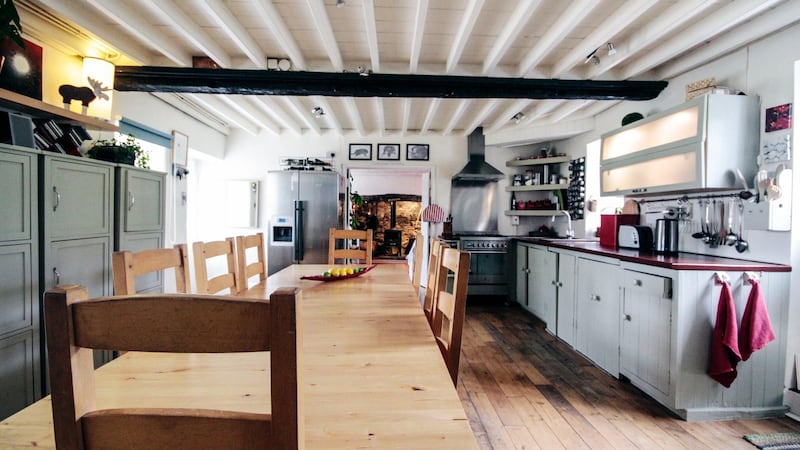
Conservation architects and couple Philip and Delphine Geoghegan practice what they preach in their almost 350-year-old Quaker-built home in Co Wicklow. They decided to keep the timber kitchen, a design by David Strawbridge – the former owner whose eponymous shop is in Mount Usher Gardens – and “change” it every year by simply painting it, Delphine explains.
“It started off deep blue, has been several shades of green and even fire engine red before we decided to subdue it. I’m not sure the Quakers liked the red.” She’s thinking of changing it again soon.
She found the wood lockers on the opposite wall in a hardware store, Delahunts in Wicklow town, and transported the three home one at time as that was all that would fit in the back of her car. The oak floor was new when they moved in but more than a decade of rugby and football boots have appealingly scuffed it to make it almost look reclaimed.
The stone fireplace where the wood-burning stove sits had been hidden behind layers of brick, preserving it perfectly. The stone also holds the heat for longer than more modern materials. The timber beams were already painted pitch black. The couple would have preferred if they were timber-coloured, and the joists have been painted a French white to open up the eight-foot ceilinged room.
Upstairs, the master bedroom is big enough to accommodate a walk-in wardrobe hidden behind the tongue-and-groove-panelled bedhead thanks to its 3.5m ceiling heights. In another part of the house, in what was once a forge, the couple found evidence of cow dung having been used to minimise soot within the chimney – a centuries-old technique that is still effective.
Iconcity.ie; Strawbridge.ie
Episode 4 : Jewel box salon
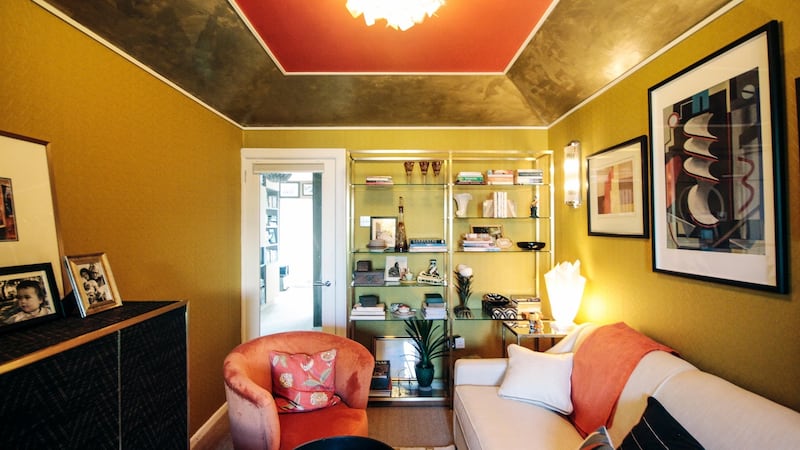
Gitte Trench had to move from her home in Dalkey to a bungalow in Greystones to help pay for her husband’s care.
Growing up surrounded by modern furniture and art she grew rather tired of plain white walls and now favours the ambience that wallpaper adds.
“It gives another dimension to surfaces,” she explains. The walls of her Greystones bungalow are covered in dark, rich papers that she fells better show off works of art. The colourscape also reflects her mood – her husband recently had to go into full-time care and her world has dimmed, she says. But life goes on and in her formal sittingroom she has created a jewel box of a space. Inspired by art deco lines she had a plasterer redo the ceiling to create a stepped effect using sheets of plasterboard to eliminate the corners. The 70-year-old affixed strips of balsa wood to the join using a nail gun and then gilded the ceiling by hand using gold leaf.
“The orange/red shade on the rest of the ceiling is inspired by the colour of San Francisco’s Golden Gate bridge,” she explains. The colour is also called international orange. She papered the walls in a Casamance Abstract print, €82 per roll, a deep ochre yellow with a gold geometric overprint that tones with the ceiling. A rich velvet tub chair is just one of the seats she likes to occupy here. The brass etagere to the rear of the shot is a piece that was modified to fit the space by her son, designer Robert Trench of Trench Studio who also made the room’s dark wood cocktail cabinet. Elsewhere in the house she has used dark greys with rust-effect wallpapers to create interest, and a stepladder in ice-lolly orange leads upstairs to an office space.
Studiotrench.ie; casahome.ie;
Episode 5: Stone crazy for Wicklow granite
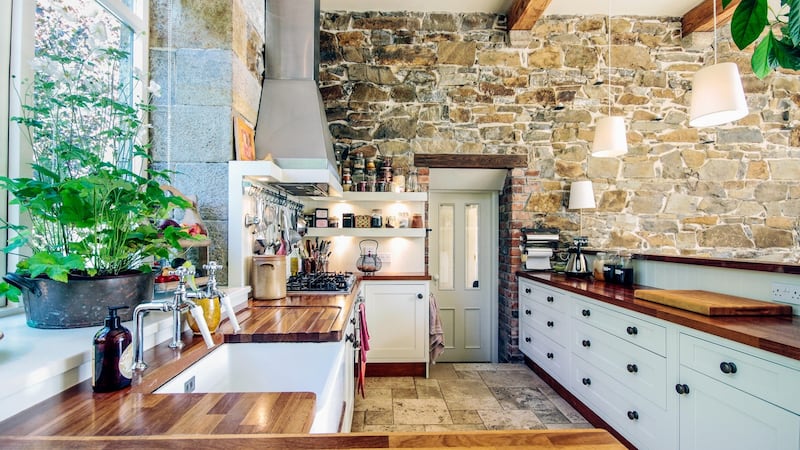
When Susan Gorman and Alan Ross bought the property in Tinahealy, Co Wicklow, all that remained of the building was its four exterior stone walls made of gorgeous local granite. The couple took their decor palette from the stone, letting the walls do a lot of the decorative talking and keeping the rest of the furnishings quite simple. Burnt orange and gingernut colours in the sofas and cushions add warmth while a soft white kitchen and honey-coloured floorboards complement the browns and greens of the surrounding countryside. Gorman has added textural touches such as old prayer mats slung on the backs of the sofas to add colour, and higgledy-piggledy bookshelves above the fireplace add character. While the pair operate a precision engineering company, when it comes to home life a relaxed approach is more their taste, Gorman explains.
Several of the homes in this year’s final feature telescopes, a style trope you see in many interior books and magazine spreads. The one in this Wicklow abode gets regular use, Gorman insists. “There is no light pollution here and on a clear night you can see the Milky Way.”
Episode 6: Barn style in Co Antrim
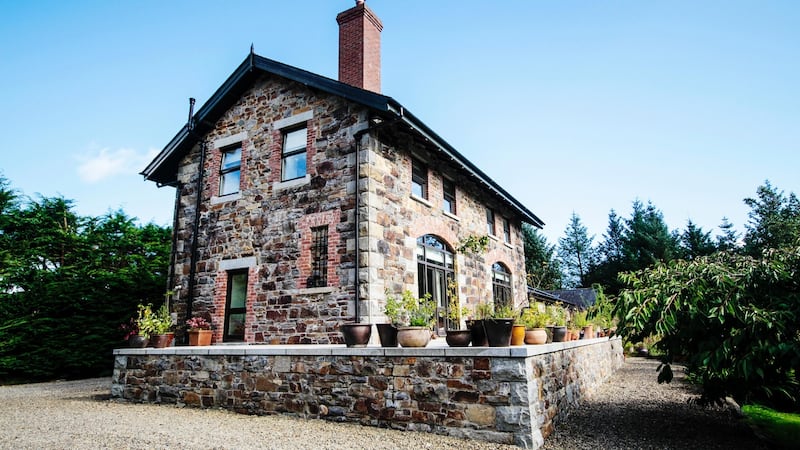
Running a construction company, CRD Contracts, husband and wife Colin and Ruth Donnelly built their barn-style house in Rathkenny in Co Antrim. By the time they had paid for their dream home there was very little by way of additional funds to furnish it. Undeterred, Ruth scoured second-hand shops and charity stores for pieces that had interesting shapes, taking them home and painting them in a rainbow of colours using Rustoleum, an ultra matte chalk paint, to turn them from bashed-up old brown furniture into something else. In the open-plan kitchen/diningroom she painted a round-topped dresser, complete with cutlery drawer, in a soft white so that it would blend in with the walls but its shape would make a statement, Ruth explains.
Their son Garron, now 9½, picked the colour of the kitchen, and Woodland Kitchens NI supplied the units. She doesn’t know where the smart solid oak dining table and chairs came from – only that they were given to Colin in lieu of payment for construction work he had done.
Woodlandni.com; rustoleum.com
Episode 7: Statement stairs and sink
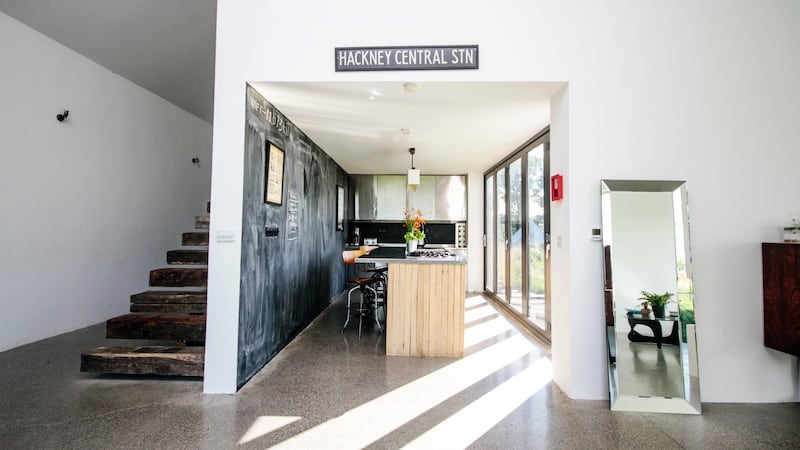
Louise McGuane and Dominic McCarthy set up home in the village of Cooraclare in west Clare, about a quarter of a mile from the Atlantic ocean. She got the idea for their floating staircase from a gallery in Hong Kong. The cantilevered steps are suspended from the wall and the treads feature railway sleepers, a cost-effective material that cost her €19 per sleeper, with each sleeper giving her five or six steps. The stairs have no outside handrail but there is one secreted into the wall side. McGuane, who lived and travelled across Asia working with Irish Distillers and Pernod Ricard, is in the throes of setting up an Irish whiskey brand, JJ Corry, in this corner of Co Clare. She’s still waiting to find out how the environment affects the whiskey she has maturing on site.
The house was designed by a friend, Swiss architect Jean Claude Girard, and features all sorts of thoughtful details. In the upstairs bathroom set under the eaves, the wash hand basin floats above a reclaimed wood surround installed by local joiner Eugene Woods. McGuane believes it to be cedar.
“It was the dancefloor in the parish hall in Curraclare and was put down in the 1940s. My dad then sanded each single piece by hand.”
The winning home will be announced on RTÉ 1 on Thursday April 27th










